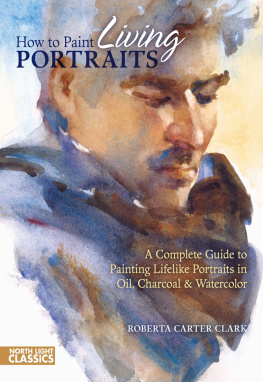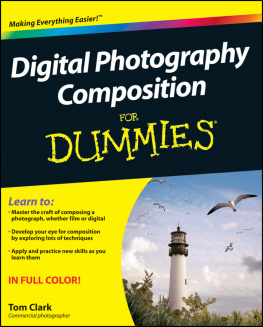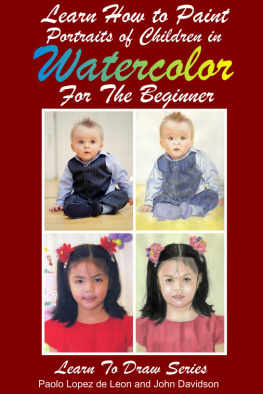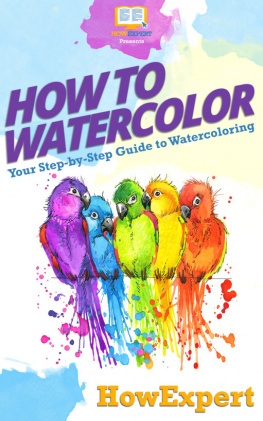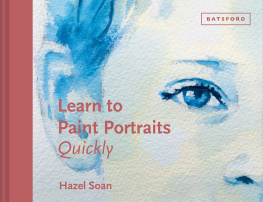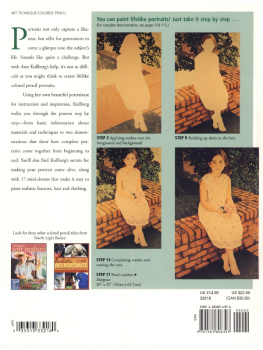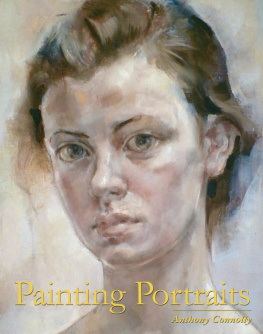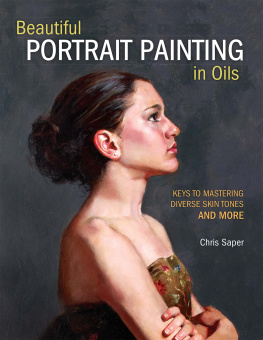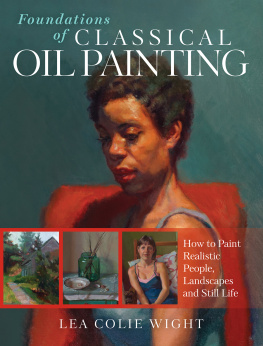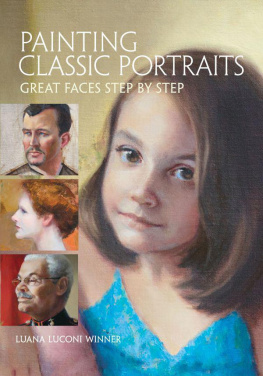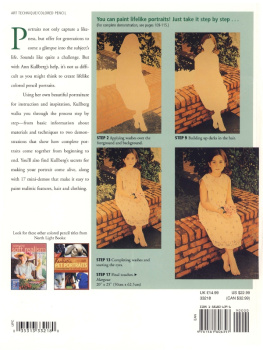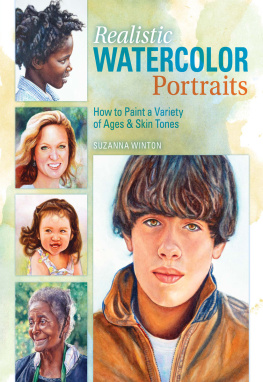How to Paint Living
PORTRAITS
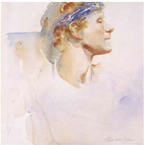
Blue Head
Watercolor on 140-lb. (300gsm) cold press 14 14 (37cm 37cm)
ROBERTA CARTER CLARK

How to Paint Living Portraits. Original copyright 1990 by Roberta Carter Clark. Revised edition copyright 2011 by Roberta Carter Clark. Manufactured in China. All rights reserved. No part of this book may be reproduced in any form or by any electronic or mechanical means including information storage and retrieval systems without permission in writing from the publisher, except by a reviewer who may quote writing from the publisher, except by a reviewer who may quote brief passages in a review. Published by North Light Books, an imprint of F+W Media, Inc., 4700 East Galbraith Road, Cincinnati, Ohio, 45236. (800) 289-0963. Revised Edition.

Previously published under the title How to Paint Living Portraits.
Other fine North Light Books are available from your local bookstore, art supply store or online supplier. Visit our website at www.fwmedia.com.
15 14 13 12 11 5 4 3 2 1
DISTRIBUTED IN CANADA BY FRASER DIRECT
100 Armstrong Avenue
Georgetown, Ontario, Canada L7G 5S4
Tel: (905) 877-4411
DISTRIBUTED IN THE U.K. AND EUROPE BY F+W MEDIA INTERNATIONAL
Brunel House, Newton Abbot, Devon, TQ12 4PU, England
Tel: (+44) 1626 323200, Fax: (+44) 1626 323319
E-mail: postmaster@davidandcharles.co.uk
DISTRIBUTED IN AUSTRALIA BY CAPRICORN LINK
P.O. Box 704, S. Windsor NSW, 2756 Australia
Tel: (02) 4577-3555
Library of Congress Cataloging-in-Publication Data
Clark, Roberta Carter.
How to draw living portraits / by Roberta Carter Clark. Rev. ed.
p. cm.
Rev. ed. of: How to paint living portraits. 1990.
Includes index.
ISBN 978-1-4403-0393-7 (pbk. : alk. paper)
eISBN 13: 978-1-4403-1511-4
1. Portrait painting Technique. I. Clark, Roberta Carter. How to paint living portraits. 1990. II. Title.
ND1302.C54 2011
751.45'42 dc22
2010042888
Edited by Mary Burzlaff Bostic
Cover designed by Jennifer Hoffman
Interior designed by Hotiron Creative
Production coordinated by Mark Griffin
Metric Conversion Chart
To convert | to | multiply by |
Inches | Centimeters | 2.54 |
Centimeters | Inches | 0.4 |
Feet | Centimeters | 30.5 |
Centimeters | Feet | 0.03 |
Yards | Meters | 0.9 |
Meters | Yards | 1.1 |
What You Need
Surface
charcoal paper
medium vine charcoal paper
soft vine charcoal paper
midtone gray charcoal paper
stretched and gessoed canvas
primed linen canvas
cold-pressed illustration board
140-lb. (300gsm) Arches cold-pressed
watercolor paper
Oil Pigments
Alizarin Crimson
Brown Madder
Burnt Sienna
Cadmium Lemon
Cadmium Red Light
Cadmium Yellow Orange
Cerulean Blue
Cobalt Blue
Lemon Yellow
Light Red
Naples Yellow
Raw Sienna
Raw Umber
Scarlet Lake
Titanium White
Ultramarine Blue
Venetian Red
Yellow Ochre
Watercolor Pigments
Brown Madder
Burnt Sienna
Burnt Umber
Cerulean Blue
Cobalt Blue
Olive Green
Raw Sienna
Scarlet Lake
Ultramarine Blue
Yellow Ochre
Brushes
-inch (6mm) flat
nos. 2, 4 bristles
nos. 2, 4, 6 filberts
nos. 3, 8 rounds
no. 3 sabeline
no. 8 pointed brush
flat square synthetic sable brush (bright)
foam rubber brush
Other Supplies
acrylic gesso
ballpoint pen (black)
brown wrapping paper
brush washer
charcoal pencil
clamps
cotton fabric
disposable paper palette
drawing board
easel
gum turpentine or odorless paint thinner
hand mirror
kitchen timer
kneaded eraser
markers
masking tape
Masonite pencil (untempered)
medium soft charcoal
natural sponge
no. 2 pencil
oil painting medium (Liquin)
painting table or taboret
palette knife
paper towels or old towel
pen
pencil
portable spotlight
pushpins
razor blade
retouch varnish
ruler
sketchbook or drawing paper
soft charcoal
soft pencil (6B)
split brush for drybrushing
spray bottle
spray fixative
tracing paper
water container
white chalk or pastel
Preface
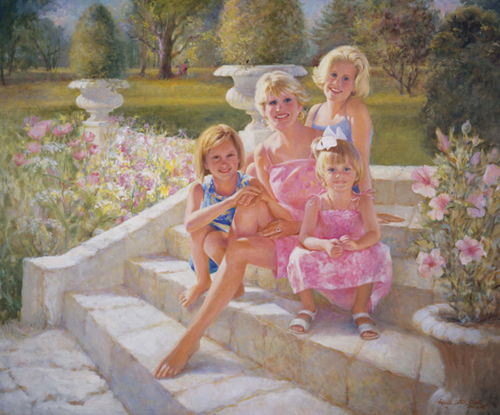
The Hubert Portrait: Lisa and Her Daughters, Anna, Merrill and Ellie
Oil on canvas 40 56 (102cm 142cm) from the Huber Collection
Those of us who are interested in producing a portrait of another human being are usually so enchanted by this prospect that every other kind of artistic endeavor pales by comparison.
It's an interesting phenomenon that every person on our planet has two eyes, one nose and one mouth, and yet each of us looks completely different from everyone else. This is the uniqueness that the portrait painter must catch. This differentness plus the specific personality projected make up what we call the likeness, and the painter's skill and sensitivity in being able to capture these elements are what make the portrait successful.
I'm hoping that you have had some previous experience in drawing and painting before tackling this book. To learn the use of charcoal, oil and watercolors by painting people is a most difficult task, and as a beginner, you may lay down your tools in frustration. However, once you've had some success with faces you may never again find the same sort of excitement depicting landscapes and still life.
If you can achieve a recognizable image in charcoal and understand something about mixing and applying colors, you will gain a great deal from this book. Just remember, no one is born knowing how to paint a portrait. Each of us has to learn by studying, thinking and working. If you have the desire, you will surely learn, too.
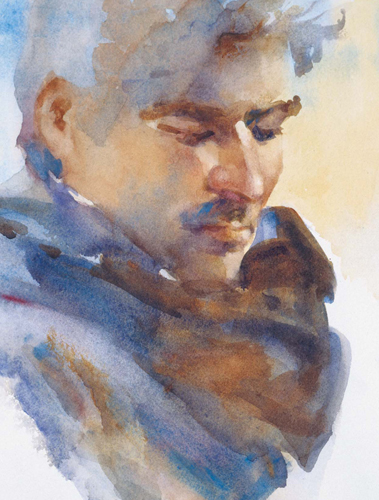
1
The Proportions of the Head
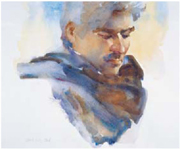
Meditation
Watercolor on 140-lb. (300gsm) cold press 14 16 (36cm 41cm)
T he success of a portrait is largely determined by how well the parts of the head interrelate: how the nose relates to the ears, the mouth to the jaw, the eyes to the nose, the face to the head all these things must be discovered. This isn't overwhelming if you have a plan or blueprint of the way these parts fit together.

